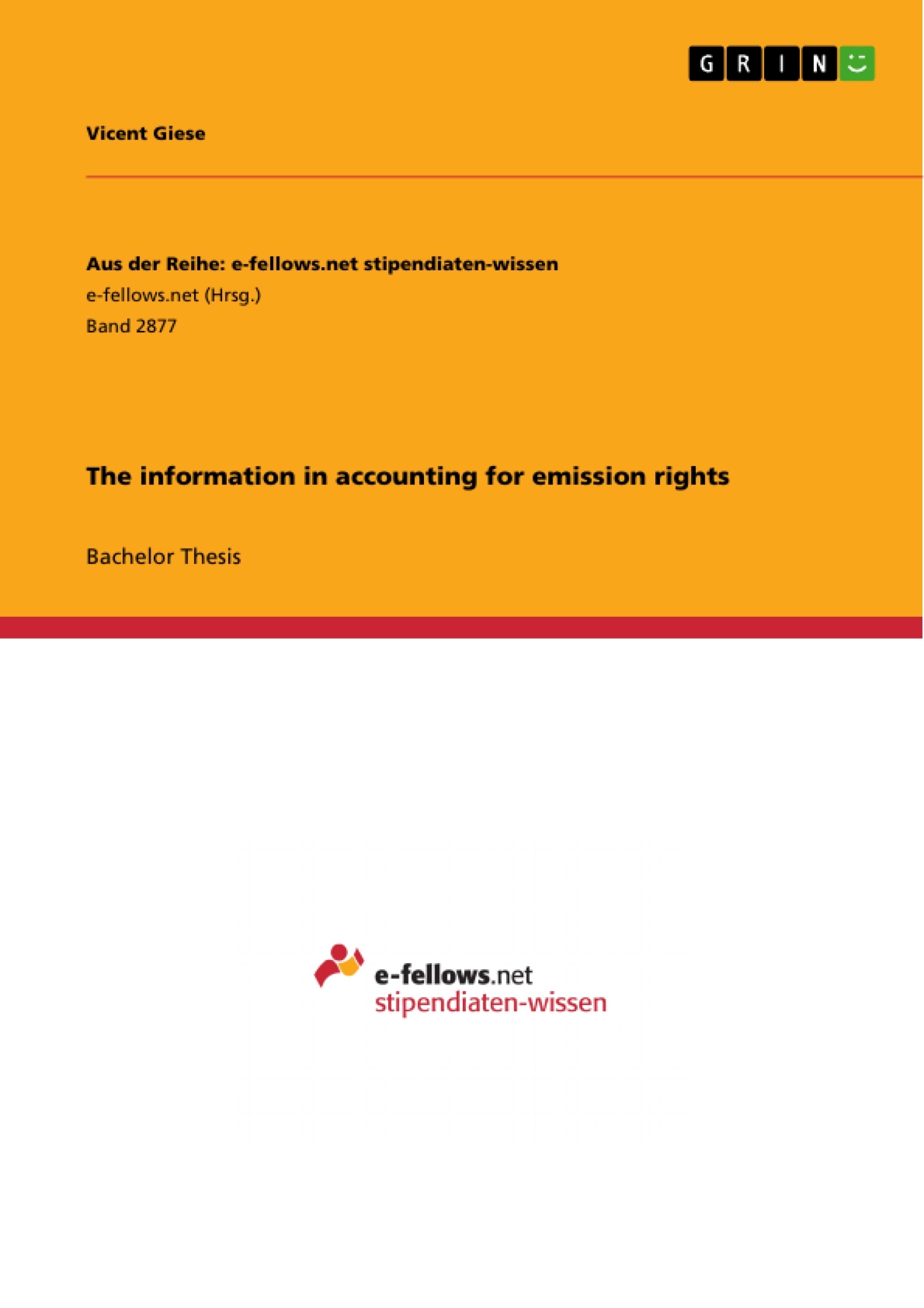By connecting the findings of several existing normative and empirical studies on the topic of accounting for emission rights, this thesis answers the following research question: Which information content do the different accounting practices have, that firms use to account for emission rights and which part of that information is valuable from a capital market perspective?
Results from this analysis can provide insights to standard setters regarding the necessary details of a future mandatory accounting solution for emission rights. Although several other emission trading schemes exist in the world, this thesis focuses on the geographical regions of the European Union (EU) and the United States of America (USA), since they are home to the largest and most mature emission trading schemes.
Inhaltsverzeichnis (Table of Contents)
- Introduction
- ER, ETS and their implications for firms
- Regulatory background and geographical coverage of ETS
- Accounting relevance of emission rights for firms
- Financial accounting vs. non-financial disclosure
- Accounting practices for ER
- Overview of possible financial accounting practices
- Financial accounting approaches used in practice
- Information content of the financial accounting approaches identified
- Non-financial disclosure practices and their information content
- Information needed vs. information provided
- Information about ER needed on the capital market
- Comparison: Information provided and information required
- Summary and implications
Zielsetzung und Themenschwerpunkte (Objectives and Key Themes)
This thesis aims to answer the research question: Which information about ER is needed on the capital market, and which information is actually provided?
- The impact of emission rights (ER) and emissions trading schemes (ETS) on firms.
- Accounting practices for ER, including financial accounting and non-financial disclosures.
- The information needs of capital markets regarding ER.
- The comparison of information provided and information required by capital markets.
- The implications of the findings for accounting standards and practices.
Zusammenfassung der Kapitel (Chapter Summaries)
- Introduction: This chapter provides an overview of the context and motivation for the research. It discusses the growing pressure on firms to address their environmental impact and the use of pricing mechanisms, such as ETS, to internalize these costs. The chapter highlights the lack of standardized accounting guidance for ER, particularly by international standard setters like the IASB and FASB.
- ER, ETS and their implications for firms: This chapter delves into the regulatory background and geographical coverage of ETS. It examines the accounting relevance of ER for firms and the differences between financial accounting and non-financial disclosure practices.
- Accounting practices for ER: This chapter reviews the possible financial accounting practices for ER, including those used in practice. It analyzes the information content of these practices and explores non-financial disclosure practices and their informative value.
- Information needed vs. information provided: This chapter focuses on the information about ER that is required by capital markets. It compares this information with the information actually provided by firms, identifying any gaps or inconsistencies.
Schlüsselwörter (Keywords)
This thesis focuses on the accounting treatment of emission rights (ER), emissions trading schemes (ETS), financial accounting, non-financial disclosure, capital market information needs, and accounting standards. It examines the practices of firms, particularly in relation to the EU Emissions Trading Scheme (EU ETS).
- Citar trabajo
- Vicent Giese (Autor), 2018, The information in accounting for emission rights, Múnich, GRIN Verlag, https://www.grin.com/document/448493



